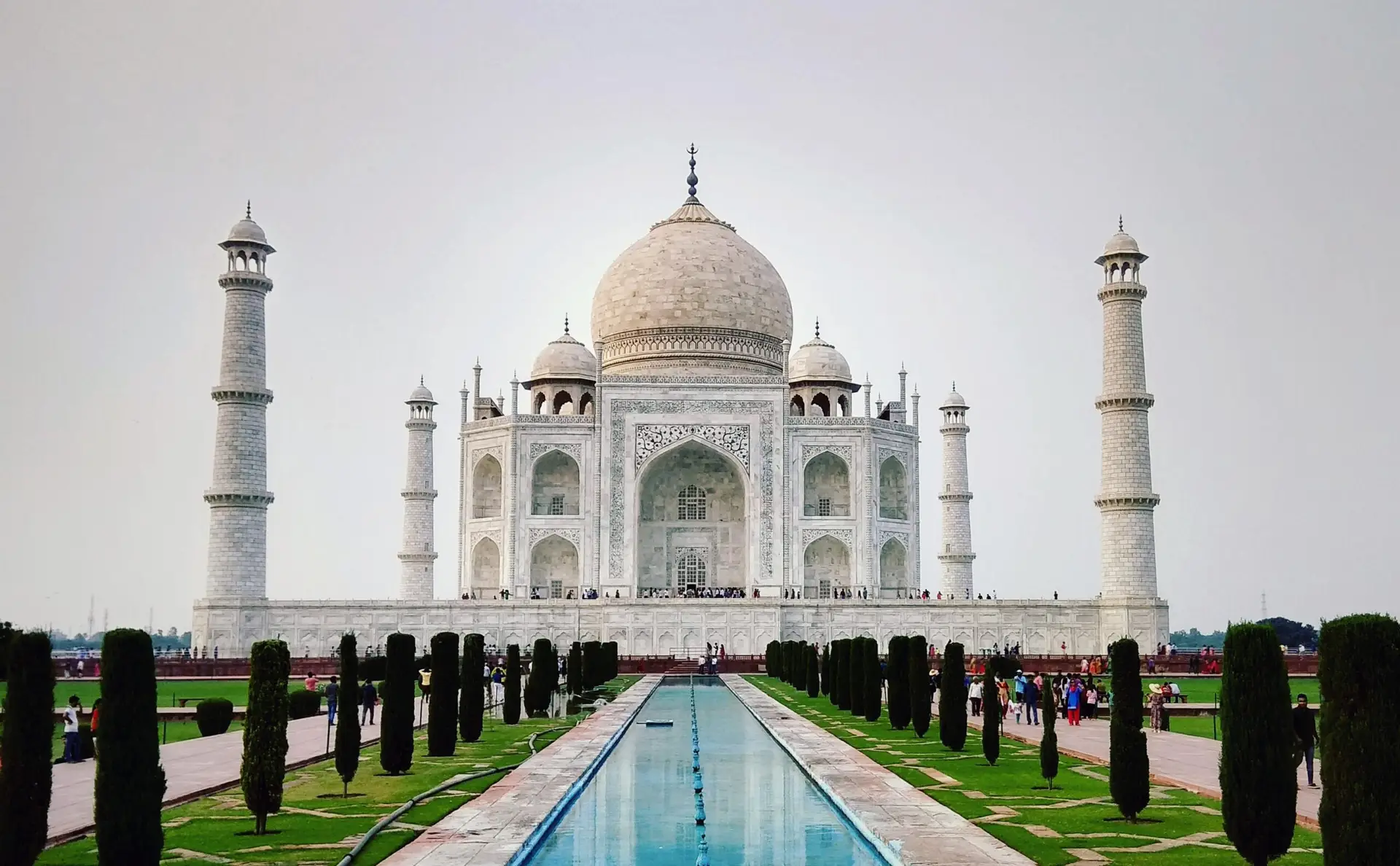Wear comfortable shoes.
You’ll walk more than you think.

There’s something about the Taj Mahal that lingers long after you leave. Maybe it’s the way the marble catches the morning light, or the way the gardens seem to hum with centuries of whispers. I’ll never forget the first time I walked through those gates—half-asleep, chai in hand, a cool breeze cutting through Agra’s usual heat. The Taj Mahal isn’t just something you see; it’s something you feel.
The Taj Mahal’s story is as beautiful as its arches. Mughal Emperor Shah Jahan built this place for his favorite wife, Mumtaz Mahal. It took over 20,000 workers nearly two decades to carve, polish, and paint every inch. It’s not just a building; it’s a heartbreak turned into something everlasting.
Funny thing—while most people talk about the white marble, I love the way the minarets are angled. They actually tilt outward, so if there’s ever an earthquake, they’ll fall away from the main dome. Smart, and a little bit sad, if you think about it.
If you can, go between October and March. Agra in the summer is no joke—just trust me on that. Sunrise is best for photos and for avoiding the crowds. The locals know it, too—come early, and you’ll share the marble with just the birds and the guards.
If you show up on a Friday (when the Taj is closed), you’ll have to console yourself with Agra’s famous breakfast jalebi and chai. Not a bad trade, honestly.
From Delhi, the Gatimaan Express is your best bet. Comfortable, fast, and you’ll be at Agra Cantt before you’ve finished your breakfast. If you’d rather drive, the Yamuna Expressway is smooth, but don’t forget to roll down the window and breathe in the rhythm of small-town India shifting to city bustle.
Agra’s streets are chaos and color, rickshaws dodging cows, fruit sellers calling out, and the distant hum of tuk-tuks. The city isn’t just a backdrop—it’s part of the experience.
Open every day from sunrise to sunset, except Fridays.
Tip: Book tickets through the official ASI website. The touts outside may be friendly, but the official booth is always safer
The main mausoleum is breathtaking, but don’t skip the mosque and guest house on either side. The contrast of red sandstone and marble is something cameras don’t do justice to.
For the best sunset photos, cross the Yamuna River to Mehtab Bagh. It’s a short walk or a quick rickshaw ride, and the Taj Mahal reflected in the water is something you’ll want to remember.
The Charbagh gardens are my favorite. They’re designed to look like paradise, and on a quiet morning, it almost feels true. **If you’re hungry, try Agra’s famous Petha—**it’s sweet enough to make your teeth ache, but it’s tradition.
Wear comfortable shoes.
You’ll walk more than you think.
Bring water.
Agra’s heat doesn’t play fair.
Take your time.
Let the place sink in. The crowds thin out if you’re patient.
Be respectful.
This is a real place to real people, not just a postcard.
It’s not just about the marble, the minarets, or even the story. It’s about standing there, eyes up, feeling small and part of something huge at the same time. You come for the photos, you stay for the quiet, and you leave with something you can’t quite name.